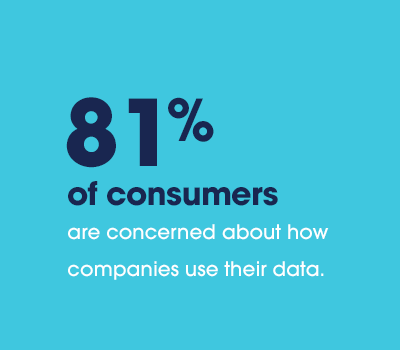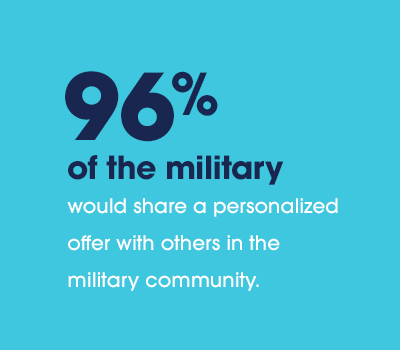Current approaches to personalized marketing are falling short, and both brands and consumers are searching for a new way to build mutually satisfying relationships. Brands are responding by implementing new approaches to personalization that give consumers control of their data. This move is restoring trust in the brand-consumer relationship and helping brands leverage the social connections inherent in consumer communities.
Why Brands Need to Revise Their Personalization Strategy
While personalization based on demographics like zip code and gender has always been an affordable option, it doesn’t deliver a high return. The purchase intent signal is weak, so conversions remain low.
Third-party behavioral marketing also misses the mark because the data it’s built on is costly and unverified. The data is also typically collected without the user’s explicit knowledge or consent, which is eroding consumer trust. Consumers dislike the unscrupulous way Facebook and data management platforms (DMPs) collect and distribute personal data. And brands that rely on this “digital exhaust” to acquire customers are setting themselves up for failure.
First-party data collected in customer data platforms (CDPs) deliver personalization that typically gets around the privacy concerns of DMPs. However, they’re focused only on customers that visited your digital property, leaving brands with little to no useful information for converting new prospects.
While these personalization strategies may have worked in the past, they make it difficult to create personalized campaigns that meet the demands of today’s consumers.
What Consumers Want from Brands
Up until now, most personalization strategies have missed the point: they don’t feel authentic. And that has real consequences. Eighty-six percent of consumers say authenticity matters when deciding what brands they like and support.
Consumers are demanding that brands humanize their marketing efforts. To do this, a brand needs to deeply acknowledge who consumers are, create an emotional connection with them, and demonstrate how it shares their values.
Take T-Mobile, for example. The company isn’t just rewarding the service of military members by giving them a discount. It’s also providing career support for veterans, funding military-friendly non-profits, and investing in telecom infrastructure around military bases.
Approaches like this will pay off. Nearly two-thirds of global consumers prefer to purchase products and services from companies that stand for a purpose that reflects their own values and beliefs.
Brands also need to up their game on data privacy. Eighty-one percent of consumers are concerned about how companies use their data, and 79% of US adults use at least one tool to protect their online privacy and security.
Meeting these consumer demands requires brands to rethink their approach to personalization.


Identity Marketing Unites Brands and Consumers
Identity marketing is a new approach to personalization in which brands use gated, personalized offers to acquire consumer communities who share deep-seated values and experiences. Consumer communities are connected by attributes like their life stage, such as college students, or their occupation, such as members of the military.
When brands market to consumer communities with identity-driven offers, they create a strong emotional connection that motivates people to act. Nearly 95% of consumers who are given a personalized offer based on their identity would redeem it.
Social connections within consumer communities create powerful word-of-mouth marketing that’s hard to replicate. Traditional segments share inconsequential attributes, such as the region in which they live or a product they purchased. Consumer communities, on the other hand, share meaningful challenges and life experiences, such as pursuing a degree or being deployed abroad.
Because of these shared experiences, members of consumer communities go out of their way to support each other. This includes passing along a good deal. For example, a national telecom company running an identity marketing campaign to first responders reported that, in one case, an entire staff of fire fighters gathered at their station to take advantage of the offer.
This isn’t just an isolated anecdote. Research shows that 71% of teachers who receive a personalized offer would share it with their colleagues. And 96% of the military would share a personalized offer with others in the military community.
Most importantly, brands can use identity marketing to personalize their campaigns without sacrificing consumer privacy because identity marketing is based on reciprocity. Brands invite all members of a community to enjoy a personalized offer, and consumers invite brands into their lives by opting in to redeem it.
How to Launch an Identity Marketing Program in 5 steps
Leveraging this new form of personalization is easy—just follow these five easy steps:
01 Identify the Consumer Community
Map your core buyer’s demographics and interests to a consumer community. For example, you can market to the military to reach outdoor enthusiasts and do-it-yourselfers. When your brand values align closely with the community’s, you’ll be successful in creating an emotional connection that drives loyalty.
02 Create a Personalized Offer
Develop an offer that appeals to your target community, and put an identity marketing platform in place to verify eligibility so that only consumers who are truly eligible can redeem it. This ensures the integrity of the offer, which makes it more valuable to consumers. And it prevents discount abuse, which protects your margins.
03 Invite Consumers to Redeem the Offer
Promote the offer across your existing channels to raise awareness, and invite eligible customers to opt-in to receive it. This allows customers to set the terms of engagement and establishes the foundation for a relationship built on mutual trust and respect.
04 Activate Word of Mouth
Tap into the strong networks of consumer communities by using member testimonials and videos to increase awareness. Social media campaigns and referral programs are essential elements to encouraging viral sharing.
05 Re-Engage to Build Long-Term Relationships.
Integrate the rich information provided by consumers into your CRM, and then nurture them with ongoing offers and VIP experiences through your loyalty program. If you respect consumers’ privacy and treat them as a valued member of the community, you’ll have a customer for life.


Putting the “Person” Back in Personalization
Successful relationships are built on trust. Identity marketing gives consumers the authenticity and privacy they want from their brands. And it gives brands the success that comes from effective personalized marketing.







